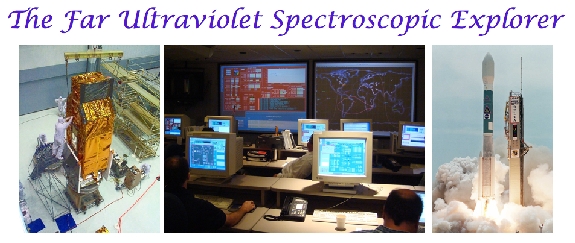 |

 |

|
The Far Ultraviolet Spectroscopic Explorer (FUSE) was a NASA astrophysics satellite/telescope whose purpose was to explore the Universe using the technique of high-resolution spectroscopy in the far-ultraviolet spectral region. The Johns Hopkins University (JHU) had the lead role in developing the mission, in collaboration with The University of Colorado at Boulder, The University of California at Berkeley, international partners the Canadian Space Agency (CSA) and the French Space Agency (CNES), and numerous corporate partners. Professor Warren Moos of the Henry A. Rowland Department of Physics and Astronomy at JHU was the Principal Investigator.
At the conclusion of the mission, the FUSE web presence was moved to its long term home at the Mikulski Archive for Space Telescopes (MAST), where the data archive is kept as well. Please visit this site for more information about the history of the FUSE project, the data from the mission, the photo archive, and much more:
|